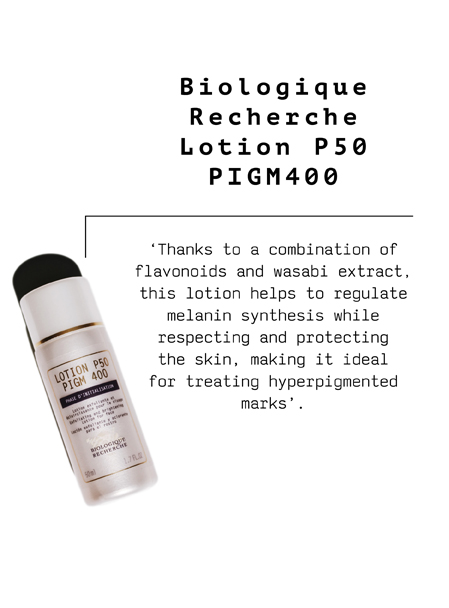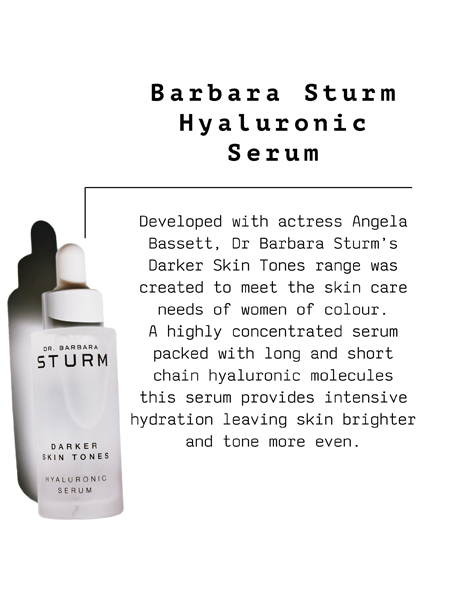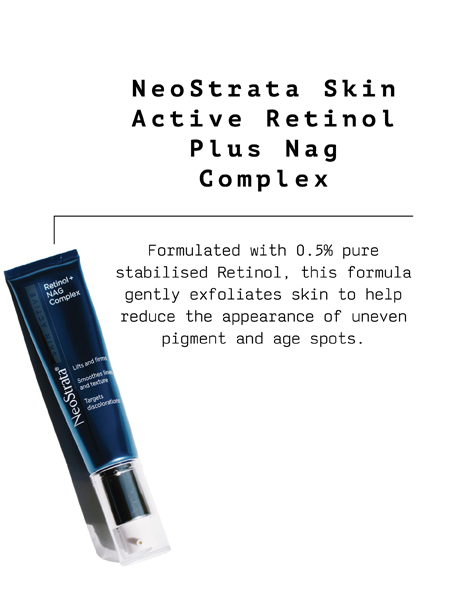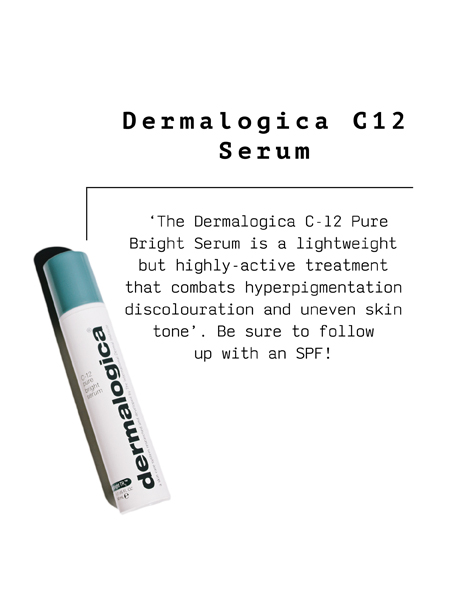How to treat hyperpigmentation
If you asked me what my skin goals were, I’d say I want to achieve flawless skin, that even-toned, polished, expensive looking without a blemish type of skin. Unless it’s a freckle, freckles are cute so I don’t mind those and I can live with the harmless mole. What I do mind however, are the little dark scars that are dotted around my face and body. A pesky spot, a flare up of eczema even a small graze leaves it’s mark, months sometimes years after the wound has healed.
What is the cause?
Hyperpigmentation, is the appearance of dark spots on areas of the skin caused by the over-production of melanin. There are different types of Hyperpigmentation and the causes can vary. Age spots, are marks that begin to appear later in life, hence the name. Sunspots, also known as ‘Solar Lentigines’ appear after exposure to the sun.
Melasma, these marks look similar to age spots but can affect larger areas of skin. The cause of Melasma is not yet known but is believed to be hereditary or triggered by hormonal changes that occur during pregnancy, hormone replacement therapy or by taking contraceptive pills.
Post-Inflammatory Hyperpigmentation a.k.a PIH occurs when an area of the skin becomes inflamed after injury. Spots, eczema, acne or a cut can all trigger PIH and it is this type of hyperpigmentation that darker skin tones are more susceptible to.
There is a common myth that dark or black skin is tough, I’m guessing partly due to the old adage ‘black don’t crack’ and whilst it’s true that the melanin in our skin gives us a natural defence against the sun’s harmful rays which in turn wards off wrinkles for longer, dark skin is just as sensitive as any other type and can react negatively especially around heat and the sun.
In science terms
Melanocytes are the cells that produce melanin. Their primary role is to protect the skin against UV radiation. When exposed to UV rays from the sun, free radicals are created in the skin, the Melanocytes become activated and produce more melanin to fight off free radicals and protect the skin from damage, this is why you tan.
However, Melanocytes in dark skin are hyper active little workers and will react and at times overreact to even the slightest irritation, i.e a pesky spot! Therefore, anything that can change the epidermis; lightening creams, peels, laser treatments should be approached with extreme caution.
How to tackle hyperpigmentation without exasperating the problem?
The answer says Dr Vanita Rattan, Consultant Aesthetician for Pharmaclinix is “Prevention. All young ladies with dark or black skin should be taught to protect their skin from UV damage by wearing SPF50 every morning. I like to use Sunblockex by Pharmaclinix because it is invisible and I can apply my make up on top”.
It’s true that prevention is always better than cure, but in some cases damage to the skin can be unavoidable especially if you suffer from acne or eczema. For this reason, investigating the cause of PIH is the first step in fighting it. “ First you need to establish the cause of the PIH and treat that first,” says London based Aesthetician Dija Ayodele and Founder of Black Skin Directory, which launched earlier this year. “If spots are forming on the skin due to acne, address the acne first. HP can be vastly improved when you address the main skin concern as it is a secondary issue”.
Dija advocates a holistic approach when treating a client with PIH. After assessing the cause of PH, the second step would be to look at “what skincare products are being used and are they formulated for skin type? Change that if necessary ensuring a sunscreen is prescribed”. Thirdly, I would assess if “there would be any benefit from professional treatment, such as chemical peels, lasers etc”. Deciding on the type of treatment is done by “looking at the wider context of the patients lifestyle habits – what they eat, allergies, exercise, stress, sleep etc and if treatment is necessary I would start prepping the patient”.
What next?
“The Hyperpigmentation Clinic is a centre that specialises in treating hyperpigmentation in skin of colour”. Says Dr Vanita Rattan, “Classic treatments for Hyperpigmentation such as Glycolic acid, TCA peels, Laser and Hydroquinone were designed for Caucasian skin or lighter pigmentation and are not always suitable for darker skin as they can burn and result in worsening pigmentation. At The Hyperpigmentation Clinic we use an advanced mandelic based treatment packed with the highest strength tyrosinase inhibitors, treating dark pigmentation in skin of colour without irritating the skin. We do this by first priming the skin using a vitamin A cream to smooth the skin for a few weeks. The client then comes into the clinic for our clear gel mask to be applied with the highest strength tyrosinase inhibitors to calm the melanocytes. Which is the only way to treat hyperpigmentation for long-term results. Calming down melanocytes which helps to prevent them from being re- triggered. We then give the client aftercare tyrosinase inhibiting creams to work in conjunction with the mask. Results are seen 8-12 weeks after treatment. One session gives an average 50% reduction in pigmentation, three sessions give an average 80-100% reduction in pigmentation.
Dija echoes this, “Tyrosinase is the contributory enzyme to melanin, so if it can be slowed or stopped then the development of HP can be addressed. Using skincare with effective tyrosinase inhibitors to work at the source, quells excessive melanin production. Retinol is also suitable for all skin tones, including darker skin and I do recommend it, where I feel a client understands and is committed to following a skincare routine. I particularly like NeoStrata Retinol + NAG it’s a low concentration of 0.5% and has the supporting ingredient NeoGlucosamine which helps to plump the skin and build collagen. SkinCeuticals also have good retinols in their range. My advise is to always start with a low concentration of retinol as this reduces chances of irritation. Introduce into your routine slowly, use a couple of times a week rather than everyday, this gives your skin time to get used to it. You must use sunscreen during the day when using retinol. Prescribed Hydroquotisne is a great ingredient, when used correctly. It’s frequently used as a melanin suppressor prior to certain treatments e.g. peels. It’s also used in the treatment of Melasma. It is safe for darker skin tones, as long as it is prescribed by a dermatologist and the patient is compliant in its use. I don’t personally use HQ, but I have seen many situations in which it is very beneficial”
If this all sounds too heavy duty for you then Dija suggests looking for products that have “liquorice root extract, kojic acid and bearberry which are natural ingredients that have tyrosinase inhibitors, but note that these are normally included in cosmeceutical products as actives to enhance the performance on HP”.
Do your research
Professional treatments are great in the fight against hyperpigmentation but do your due diligence warns Dija, check the “experience of the practitioner, do they have experience in treating skin of colour? What products does the practitioner use? Ask for further information on the ingredients used in products, and if the products will be available to purchase. If you are not easily able to purchase the recommended products for your after care and routine, then it will be difficult for you to maintain results .
Enquire about the “treatment protocols of the practitioner – what works best for you as a patient? Some protocols are more aggressive and require more commitment, more down time – are you able to commit to this? HP isn’t solved with one treatment or overnight, it can be a lengthy process. Always ensure that you have a consultation prior to treatment. The consultation is your opportunity to ask questions and decide whether the treatments on offer or the practitioner are right for you, if you don’t get satisfactory answers, then find another practitioner”. advises Dija.
There are no quick fixes when treating hyperpigmentation, HP is a management issue for dark skin as we are genetically more prone due to increased melanin but my top 5 products are:
*Retinol for increased cell turnover
*Vitamin C for overall brightness
*Using AHA’s and Tyronsinase inhibitors in daily skincare, like glycolic acid, kojic acid, niacinamide.
*Monthly professional skin peels to refresh skin
*Sunscreen to avoid making HP worse
Sun protection especially is a must for darker skin tones in order to avoid burning and damaging skin cells which can lead to skin cancer and also to avoid premature ageing. Some physical sunscreens can leave a white cast on dark skin due to the zinc oxide and titanium dioxide content, which can be off putting for most people. In this case, chemical sunscreens which work to absorb the damaging effects of the sun rays can be used. I particularly like NeoStrata Sheer Hydration SPF35, Body Shop Skin Defence SP50 and Ultra Sun Sports Gel SPF 20.
Things to avoid
“Do not try to bleach the skin using unprescribed hydroquinone products as this can result in Exogenous Onchronosis (where the skin takes on a stubborn black hue) if used long term. Never administer professional strength peels bought on the Internet as they can severely damage the skin. Using products that haven’t been prescribed for you is dangerous and can cause more problems in the long run and aggressive treatments that have the potential to cause excessive trauma and damage to the skin need to be avoided. Don’t jump on the bandwagon skin is very unique and care must be tailored”.
Hyperpigmentation Beauty Edit
These hard-hitting products promise to hydrate, rejuvenate and help to even out skin tone.








